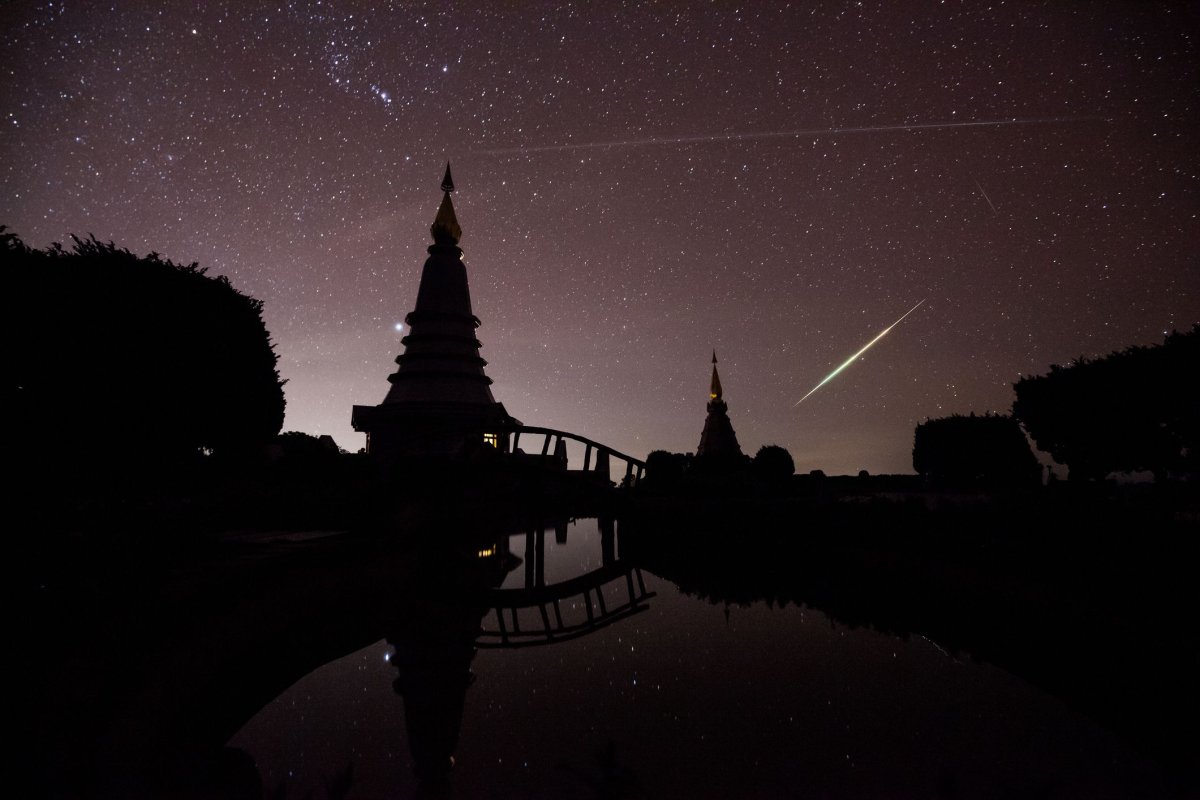The Geminid meteor shower—one of the best and most reliable displays of the year—will peak on 13 and 14 December. Up to 100 meteors per hour could be visible, and with the moon in its first quarter, this year's shower should be particularly impressive.
Bill Cook, lead of NASA's Meteoroid Environments Office, told Newsweek: "Sky watchers are encouraged to go out after moon set at 10:30PM [on the 13 December]; that way there will be no moonlight to wash out the fainter meteors.
Read more: Supermoon and total lunar eclipse 'blood moon' set to coincide for rare celestial event
"Those with really dark skies—away from city and suburb lights—should see as many as 100 Geminids per hour when Gemini is highest around 2 AM. Folks in suburbia should see one quarter to one half this rate, depending on the amount of artificial lights in their vicinity."
Geminid meteors start appearing in the sky around 4 December and lasts until 17 December. Normally, meteor showers come when Earth passes through the tail of a comet—tiny bits of debris fall into Earth's atmosphere, where they burn up, producing bright flashes across the sky.
The Geminids is a little different, however. It is thought to come from 3200 Phaethon, a baffling space rock that has features of both an asteroid and a comet. "Unlike most meteor showers which originate from comets, the Geminids originate from an asteroid: 3200 Phaethon," NASA said in a statement. "Asteroid 3200 Phaethon takes 1.4 years to orbit the sun once. It is possible that Phaethon is a 'dead comet' or a new kind of object being discussed by astronomers called a 'rock comet.'
"When Phaethon passes by the sun it does not develop a cometary tail, and its spectra looks like a rocky asteroid. Also, the bits and pieces that break off to form the Geminid meteoroids are also several times denser than cometary dust flakes."
Meteors from Phaethon are travelling at around 79,000 mph—that's 22 miles per second. The Geminids is a fairly recent addition to the meteor shower calendar, having first been observed in 1862—far later than the Perseids, for example, which was first recorded in 36AD.
People wishing to observe the meteor shower should try to get away from areas with light pollution. Providing tips on how best to view, Cooke said: "The keys to observing meteor showers are 1) find the darkest site you can, 2) give your eyes 30 to 45 minutes to adjust to the dark (do not look at your bright cell phone screen, as that will mess up night vision), and 3) lie on your back looking straight up so as to take in as much sky as possible. Do not look at Gemini as meteors closer to the radiant are less impressive, with shorter trains."

Uncommon Knowledge
Newsweek is committed to challenging conventional wisdom and finding connections in the search for common ground.
Newsweek is committed to challenging conventional wisdom and finding connections in the search for common ground.
About the writer
Hannah Osborne is Nesweek's Science Editor, based in London, UK. Hannah joined Newsweek in 2017 from IBTimes UK. She is ... Read more
To read how Newsweek uses AI as a newsroom tool, Click here.








